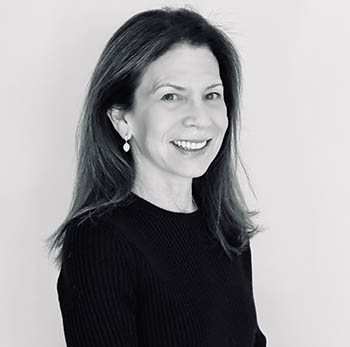Ever wondered who to thank for all that useful COVID info in your newsfeed, on Facebook or even on the community bulletin board? There’s a good chance it’s the Ad Council, and by extension, Heidi Arthur ’85.
For the last 80 years, this nonprofit organization built for communicating largescale, pressing issues, has had a hand in things like changing societal norms around seatbelts or buzzed driving.
Since 2020, it’s been heavily focused on the COVID-19 pandemic, disseminating information through a vast network of partners in media, marketing and advertising.
“The Ad Council has had great success with our COVID-19 vaccine education initiative called ‘It’s Up to You,’” said Arthur, chief campaign development officer at the Ad Council. “Over the course of one year, we helped reduce national vaccine hesitancy from 50 percent to 5 percent by building confidence across various communities.”
Its ability to achieve such results is predicated on its very purpose.
“We are basically built for a moment like this. We have tremendous convening power and throughout the pandemic, we brought together leading public health experts, media, major brands, social platforms, tech and talent to get behind research-based messages that would inspire action,” Arthur said. “Our goal was to ensure that the American public had the most accurate information possible to help them feel empowered to make an informed decision about vaccines.”
“Our campaign, ‘It’s Up to You,’ was customized for each priority audience,” she continued. “We developed over 800 pieces of content and collaborated with wide-ranging partners, including CVS, Meta, Google/YouTube, all major sports leagues, MTV, Verizon, MasterCard, churches, community-based organizations and many more.”
Still, it hasn’t been easy.
Communicating a complex issue, especially one we’re all learning about in real time as scientific understanding evolves (sometimes weekly), presents big challenges.
To keep pace with rapidly changing information and guidance, Arthur and her team did a couple of things.
“We worked in concert with leading public health officials to ensure that our messages reflected the latest, most accurate information,” she explained. “We relied heavily on social listening, often responding in real time through digital and social channels to communicate new essential information and combat misinformation.”
And then once people had the most current information, there was another hurdle to jump. Readers had to believe in the accuracy of the message.
“Distrust is one of the main drivers of hesitancy, therefore, who delivered the message was almost more important than the message itself,” Arthur said. “We worked hard to identify trusted voices that varied by audience, and it was critical to take a very nuanced and targeted approach. Messengers that resonated with key audiences included doctors, nurses, pharmacists, national medical experts, as well as faith and community leaders.”
“We relied heavily on medical professionals to deliver fact-based messages about vaccines and brought in influencers and celebrities as ‘amplifiers,’” she continued. “They brought tremendous scale to our campaign and were also highly influential when it came to sharing their own personal stories.”
Listening was also paramount when it came to building trust with the public.
“People were often confused and bombarded with conflicting messages. It was important for us to lead with empathy and communicate with authenticity and transparency,” Arthur said. “We consistently reassured people that it’s understandable and okay to have questions – it’s normal!”
“Through our own research, we understood the top questions that were on people’s minds. Based on this learning, we made sure our campaign directly addressed questions with timely, accurate and expert-vetted information.”
Arthur, who majored in modern language and minored in economics at Union, credits the College with sparking her interest in her field.
“I loved my Union years! I was able to devote my major to my primary passion at the time and discover new areas of interest,” she said. “I can attribute my initial introduction to the ad industry to my time as advertising editor for Concordiensis (although I did dress up as a Fig Newton and sing the jingle in my fourth grade talent show).”
“Also, Professor Bruce Reynolds – my economics professor and advisor – was wonderful and encouraged me to write my senior thesis on the effects of advertising on the fast food industry. It entailed a massive regression analysis, which was reliant on the use of the only computer in the library at the time (if my memory has this right!). Oh, have times changed!”

